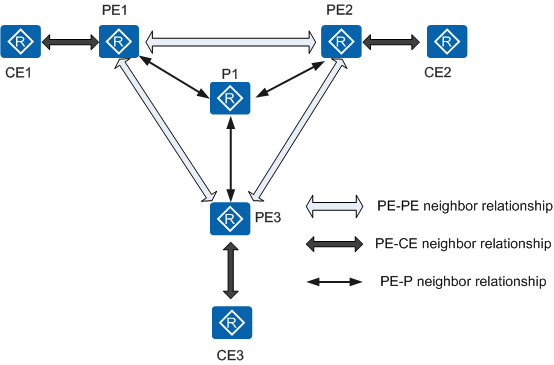PIM Neighbor Relationships in Multicast VPN
On a public network, PIM provides multicast services for the public network instance. In a VPN instance, PIM establishes PIM neighbor relationships between PE and CE devices, as well as between PE devices using multicast tunnels (MTs).
PIM neighbor relationships can be established between two or more directly connected devices on the same network segment. In multicast VPN, there are three types of PIM neighbor relationship. Taking VPNA in Figure 1 as an example, PIM neighbor relationships are shown in Figure 2.
- A PE-PE neighbor relationship is established through an MT after the local PE receives Hello packets from the same VPN instance on the remote PE through the multicast tunnel interface (MTI). A PE-PE neighbor relationship is used to discover reverse path forwarding (RPF) neighbors and check the PIM capability of the remote PE.
- A PE-CE neighbor relationship is established between a PE interface bound to a VPN instance and the CE interface connected to the PE interface. A PE-CE neighbor relationship is used to create a multicast routing table and establish a rendezvous point tree (RPT) or shortest path tree (SPT) for the VPN instance.
- A PE-P neighbor relationship is established between a PE interface bound to the public network instance and the P interface connected to the PE interface.

